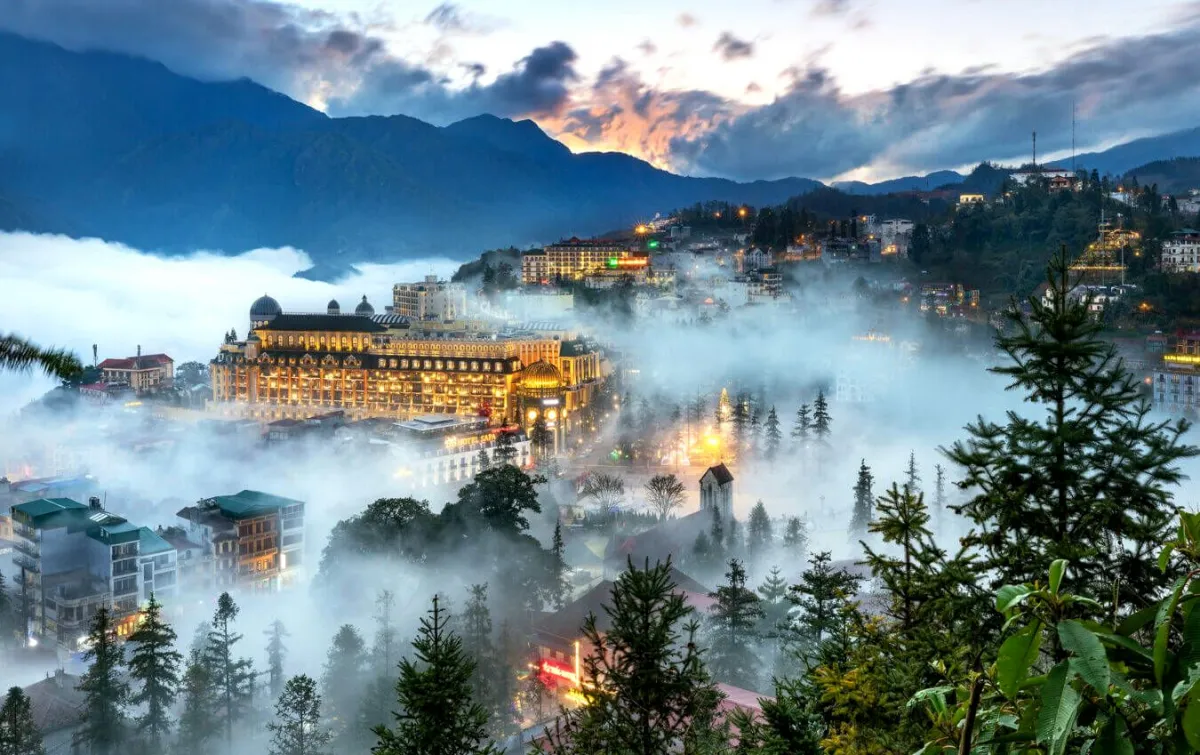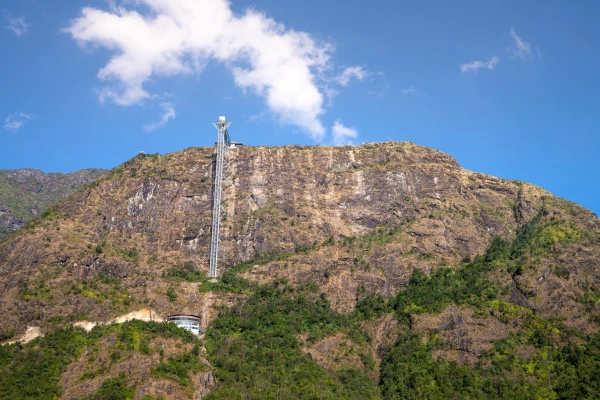Discovering the Enchantment of Sapa
Sapa, a picturesque town in the Lao Cai province of Northern Vietnam, is a destination that epitomizes the harmony between nature and cultural diversity. Nestled in the Hoàng Liên Sơn Mountains, it is famed for its terraced rice fields, diverse ethnic communities, and a wealth of trekking opportunities.
The Majestic Landscape of Sapa
Sapa is a marvel of natural beauty. The region is dominated by the towering Phang Xi Pang peak, known as the “Roof of Indochina”. The town overlooks a plunging valley of cascading rice terraces, with mist rolling over the peaks, creating a mystical aura.
The changing seasons bring new colors and moods to the landscape, from the lush green of the summer to the golden hues of the harvest season.
Cultural Mosaic
The rich cultural tapestry of Sapa is woven by its ethnic minority communities, including the H’mong, Red Dao, Tay, and Giay. Each group maintains its unique traditions, languages, and attire.
Visitors can explore local markets, where handcrafted textiles and intricate silver jewelry showcase the artisans' skills. The vibrant Bac Ha market, held every Sunday, is a kaleidoscope of color and activity, offering an authentic glimpse into local life.
Trekking and Adventure
Trekking in Sapa offers an unrivaled opportunity to explore the stunning scenery and encounter local villages.
Treks range from gentle walks through the valleys to challenging hikes up the Fansipan Mountain. Adventure enthusiasts can also engage in mountain biking and rock climbing. The recently opened cable car to Fansipan Peak provides an easier way to enjoy the spectacular views from the summit.
Culinary Delights
Sapa's cuisine reflects its cultural diversity, offering a fusion of Vietnamese and ethnic minority flavors.
Local specialties include bamboo sticky rice, grilled trout, and “Thang Co”, a traditional H’mong horsemeat soup. The town also boasts a variety of cafes and restaurants where one can unwind after a day of exploration.
Tourism and Homestays
Sapa is an exemplary model of community-based tourism. Many local families offer homestays, allowing visitors to experience authentic daily life.
These homestays contribute to the local economy while fostering cultural exchange. Tourists are encouraged to engage responsibly with the communities, respecting their traditions and environment.
When to Visit
The best time to visit Sapa is from March to May or from September to November. During these periods, the weather is more temperate, and the skies are clearer, offering the best conditions for trekking and sightseeing.
Sapa, with its breathtaking scenery, rich cultural heritage, and plethora of outdoor activities, is a destination that promises an unforgettable experience. It is a destination that calls out to the heart of every traveler, urging them to explore and embrace its enchanting world.
Discover Tours
Attractions in Sapa
What to know before visiting Sapa
Research weather, respect local customs, pack essentials, and embrace new flavors for a fulfilling travel experience.
Note
Sapa, an attractive destination in Lao Cai province, northern Vietnam, is famous for its majestic mountains, diverse cultures of ethnic minorities and amazing natural landscapes. Below are important notes to help your trip to Sapa become more complete and meaningful.
- The best time to visit Sapa is from March to May or from September to November. During these times, the weather in Sapa is cool and fresh, suitable for trekking and sightseeing.
- Sapa has a typical high mountain climate, so prepare warm clothes if you come here in winter. During the summer, even though the weather is quite cool, you still need to bring a raincoat or umbrella, because it often rains in Sapa.
- Sapa is home to many ethnic minorities such as H'mong, Red Dao, Tay and Giay. Learn about their customs and culture in advance so you can better respect and understand the community you will visit.
- Sapa offers many accommodation options from luxury hotels to traditional homestays. Homestay is a great choice to experience local life and support the community economy.
- When visiting Sapa, remember that preserving the environment and culture is very important. Choose responsible travel activities that avoid harming local nature and culture. Using local people's tourism services is also a good way to support the community.
- If you plan to participate in trekking activities or outdoor exploration, prepare all necessary equipment such as hiking shoes, comfortable clothes, and enough drinking water. Don't forget to bring a map or navigation device if you're trekking alone.
- Sapa has many attractive attractions such as Fansipan peak, Muong Hoa valley, and ethnic minority villages. Please research these destinations in advance to plan a suitable and effective visit.
- Some local residents may not speak English, so learning some basic Vietnamese phrases in advance can help you in the process of communicating and creating good relationships with the people.
- Sapa has many steep and bumpy terrains, so consider choosing the appropriate means of transportation. Motorbikes or bicycles can be good options for exploring the areas around town.
Sapa is a charming destination with much to explore and experience. With careful preparation and respect for the local culture and environment, your trip to Sapa will certainly be a memorable and enriching experience.
What guests said about hotels in Sapa
Sa Pa
Sa Pa
Sa Pa
Sa Pa
Sa Pa
Sa Pa
Sa Pa
Sa Pa
Sa Pa
Sa Pa
Sa Pa
Sa Pa
Sa Pa
Sa Pa
Sa Pa
Sa Pa
Sa Pa
Sa Pa
Sa Pa
Sa Pa

